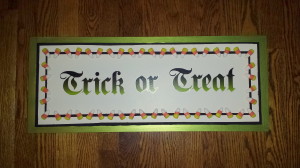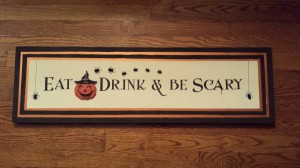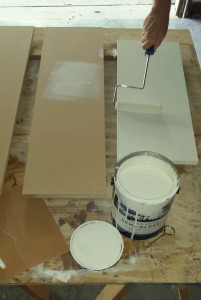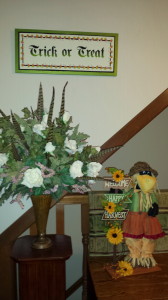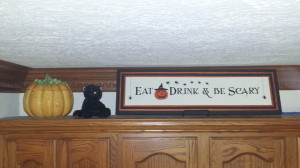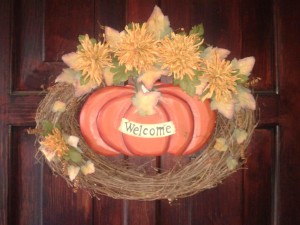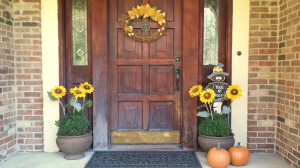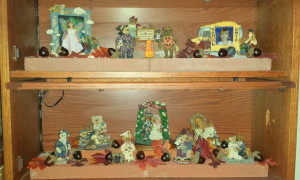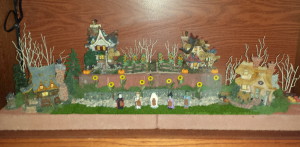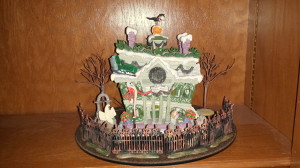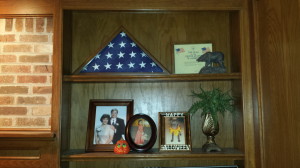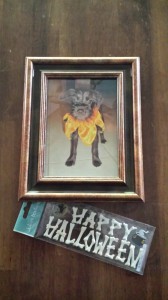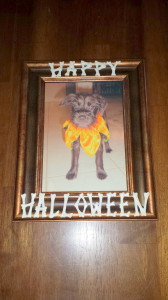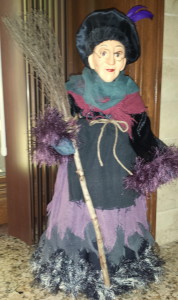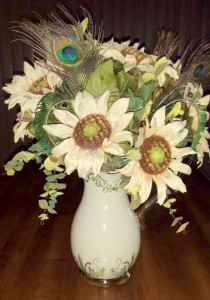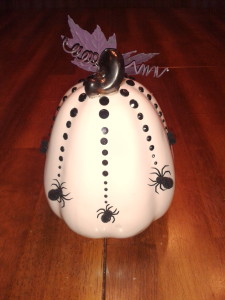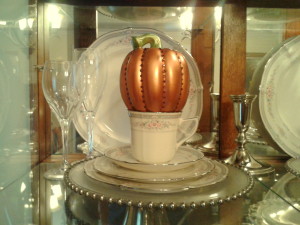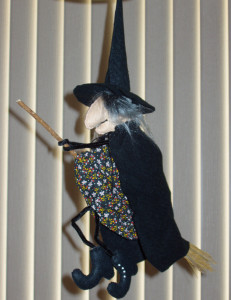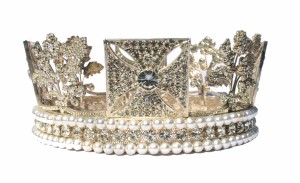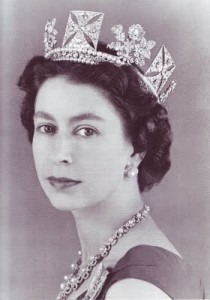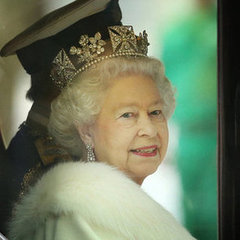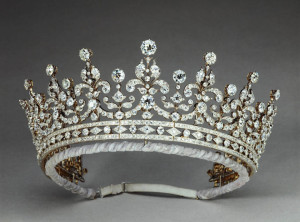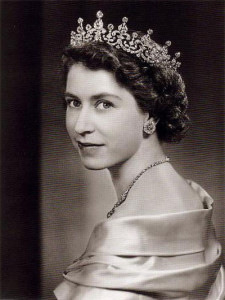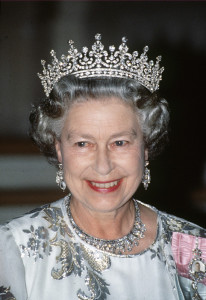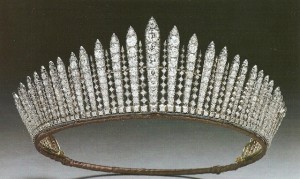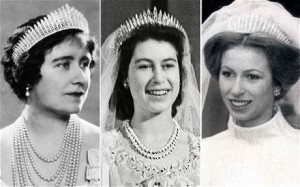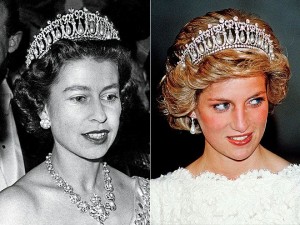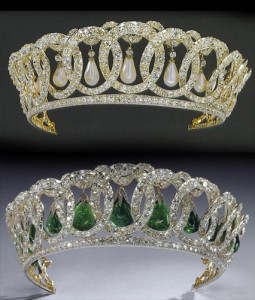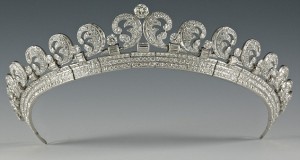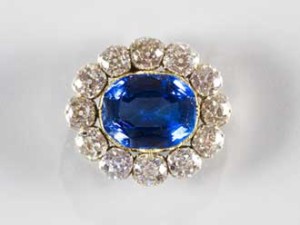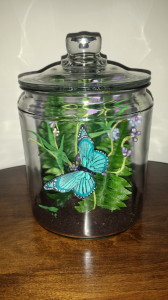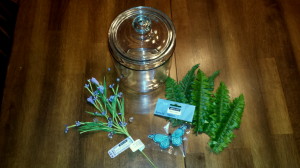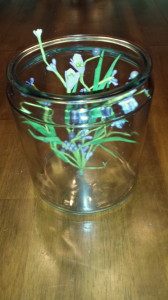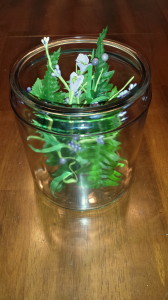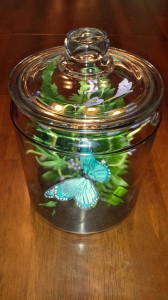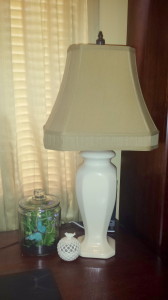
Hearst Castle was the home of newspaper owner William Randolph Hearst and the magnificent mansion he had built is located on the coast of Central California halfway between Los Angeles and San Francisco. I had the great opportunity to visit Hearst Castle several times over the years. The first time I visited was in the 1960s and as a child I was amazed at the size of the house and I thought it was absolutely fascinating to see the herd of zebras roaming over the mountains that surround the property. (Yes, I said zebras … Hearst had a small zoo on the property!) Later I visited with my son when he was small and again several years later with my husband for a unique evening tour which was a very unusual way to see Hearst Castle at dusk with the sun starting to set over the Pacific Ocean.
Hearst Castle is located near the small town of San Simeon about 43 miles from San Luis Obispo. The estate is known as La Cuesta Encantada (“The Enchanted Hill”) but Hearst usually called it simply “the ranch”. Hearst Castle is both a National and a California Historical Landmark and despite the relatively isolated area, the site attracts about one million visitors each year. Tours are available daily and there are several different ones to choose from including the evening tour mention above, more information about tours can be found at the end of this post.
A Brief History of Hearst Castle
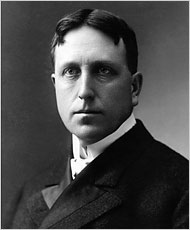 George Hearst originally purchased the 40,000 acres property in 1865. The estate was located along the coast of Central California and had beautiful vistas of the Pacific Ocean as seen from the hills of the Santa Lucia Mountain Range. The property remained largely undeveloped with only a Victorian house built for George, his wife Phoebe and their son, William Randolph Heart. There were also stables and some outbuildings and the younger Hearst loved horseback riding and taking rustic camping trips on the estate. George died in 1891 and Phoebe, died in 1919. Their son, W.R. Hearst inherited the ranch which at that time had grown in size to include 250,000 acres.
George Hearst originally purchased the 40,000 acres property in 1865. The estate was located along the coast of Central California and had beautiful vistas of the Pacific Ocean as seen from the hills of the Santa Lucia Mountain Range. The property remained largely undeveloped with only a Victorian house built for George, his wife Phoebe and their son, William Randolph Heart. There were also stables and some outbuildings and the younger Hearst loved horseback riding and taking rustic camping trips on the estate. George died in 1891 and Phoebe, died in 1919. Their son, W.R. Hearst inherited the ranch which at that time had grown in size to include 250,000 acres.
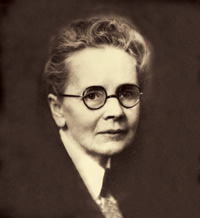 As early as 1915, Hearst had contacted an architect named Julia Morgan to discuss plans for a home that he wanted built on the estate. He selected a site that was five miles inland and located on the top of a hill with an elevation of 1,600 feet. Hearst had explained to Morgan that he wanted something permanent built on the site because he loved the location which had spectacular views but was tired of camping in tents. The original plans for a modest and simple home quickly began to grow into a much larger Spanish Revival mansion. By the summer of 1919, Morgan had the site survey completed and had drawn the first plans. Later that year construction began with the three guest cottages known as Casa del Mar, Casa del Monte and Casa del Sol. When those were near completion construction then started on Casa Grande, the main building, which is 60,645 square feet. Construction steadily continued on the estate until 1947 when Hearst stopped living there due to his failing health.
As early as 1915, Hearst had contacted an architect named Julia Morgan to discuss plans for a home that he wanted built on the estate. He selected a site that was five miles inland and located on the top of a hill with an elevation of 1,600 feet. Hearst had explained to Morgan that he wanted something permanent built on the site because he loved the location which had spectacular views but was tired of camping in tents. The original plans for a modest and simple home quickly began to grow into a much larger Spanish Revival mansion. By the summer of 1919, Morgan had the site survey completed and had drawn the first plans. Later that year construction began with the three guest cottages known as Casa del Mar, Casa del Monte and Casa del Sol. When those were near completion construction then started on Casa Grande, the main building, which is 60,645 square feet. Construction steadily continued on the estate until 1947 when Hearst stopped living there due to his failing health.
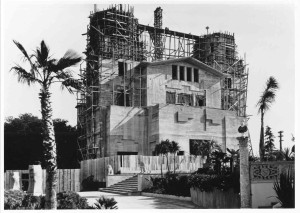 Hearst Castle includes 56 bedrooms, 61 bathrooms, 19 sitting rooms, a movie theater with 127 acres of gardens, indoor and outdoor swimming pools, tennis courts, an airfield for guests to arrive by private planes and at one time the world’s largest private zoo. Morgan was a competent civil engineer and created a gravity-based water system that would transport well water from a location on the property to a reservoir that was built less than a mile from the main building. In addition, a private power plant was built on site to supply the electricity for the estate since at the time Hearst Castle was being built homes powered by electricity was a new technology.
Hearst Castle includes 56 bedrooms, 61 bathrooms, 19 sitting rooms, a movie theater with 127 acres of gardens, indoor and outdoor swimming pools, tennis courts, an airfield for guests to arrive by private planes and at one time the world’s largest private zoo. Morgan was a competent civil engineer and created a gravity-based water system that would transport well water from a location on the property to a reservoir that was built less than a mile from the main building. In addition, a private power plant was built on site to supply the electricity for the estate since at the time Hearst Castle was being built homes powered by electricity was a new technology.
Hearst was an eccentric art and antique buyer and he furnished his home with a collection of items gathered on his many trips to Europe and his warehouses were bursting with inventory. Hearst would buy entire ceilings and facades of old European buildings on these buying trips and Morgan was challenged to fit them into the design of the estate and as a result the architectural style is a variety several different periods and the floor plan can be rather chaotic.
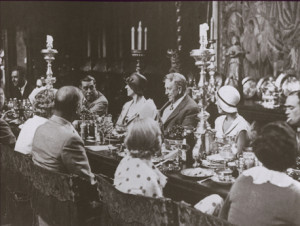 During the time that Hearst owned the property, especially during the 1920s to the 1930s, he entertained lavishly with guest lists including Hollywood actors, directors and prominent political people. Guests would arrive by private planes or on Hearst’s private train that traveled from Los Angeles. Guests were free to use the estates facilities during the day while Hearst worked on his publishing and entertainment businesses, but at night they were expected to dress formally for dinner. Card playing, billards and films shown in the private theater were the main entertainment in the evenings for Hearst’s invited guests.
During the time that Hearst owned the property, especially during the 1920s to the 1930s, he entertained lavishly with guest lists including Hollywood actors, directors and prominent political people. Guests would arrive by private planes or on Hearst’s private train that traveled from Los Angeles. Guests were free to use the estates facilities during the day while Hearst worked on his publishing and entertainment businesses, but at night they were expected to dress formally for dinner. Card playing, billards and films shown in the private theater were the main entertainment in the evenings for Hearst’s invited guests.
In 1947, Hearst left his beloved “La Cuesta Encantada” due to failing health and he never returned. He moved to a home in Beverly Hills and died on August 14, 1951 at the age of 88 years old. He was buried in the Hearst family mausoleum at the Cypress Lawn Cemetery in Colma, California. In 1957, the Hearst Corporation donated Hearst Castle to the State of California with the provision that the Hearst family would be allowed to come to the property whenever they wished. They usually stayed at the old Victorian house that was originally built by George Hearst, the house is located on the lower portion of the property and is screened by a grove of eucalyptus trees to offer privacy from the visitors to Hearst Castle.
Information About Visiting Hearst Castle
Since 1958, when Hearst Castle was first opened to the public there have been tours of Casa Grande, the guesthouses, pools and gardens. The new Visitor center is a great place to start a visit to “The Enchanted Hill” and is where visitors can purchase tour tickets. While you are waiting for the tour to start, there is a gift store and also a place to eat. Don’t miss the movie in the Visitor Center Theater that is included with the tour, “Hearst Castle – Building the Dream”, before boarding the bus for the 5-mile ride up the hill to the estate.
TOURS –
Knowledgeable guides take guests on informative tours of William Randolph Hearst private estate. There are several different tours that explore the various rooms of Casa Grande as well as other areas of the estate. The three different tours are described below and also the seasonal evening tour. All the tours visit three of the most photographed areas of the estate, the Gardens with beautiful flowers and lovely statues, the Neptune Pool which is a large outdoor pool with views of the Pacific Ocean in the distance and the Roman Pool which is a lavish indoor pool.
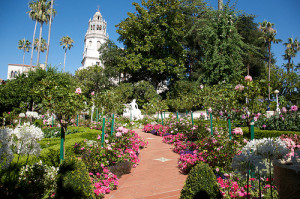
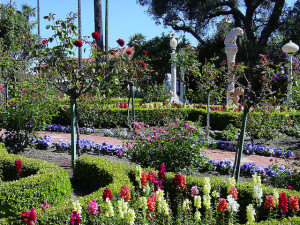
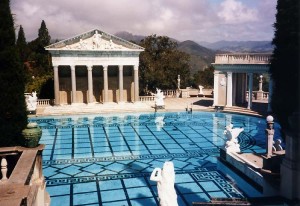
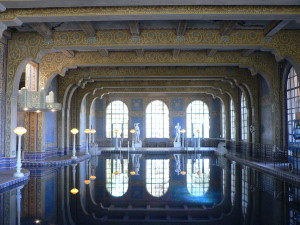
We would highly recommend making advanced reservations since it is a long drive to Hearst Castle and tours do sell out especially during the busy summer months. Visitors can reserve tickets online up to 56 days in advance at the Hearst Castle website, www.hearstcastle.org
The Grand Rooms Tour –
This tour is highly recommended for first-time visitors. The tour length is 45 minutes and takes visitors through Casa Grande, the largest house of the estate, and the rooms included in this tour are the Assembly Room, the Refectory, the Billiard Room, the Theater, Gardens, the Neptune Pool and the Roman Pool. These rooms and areas of the estate were where guests gathered to eat and be entertained.
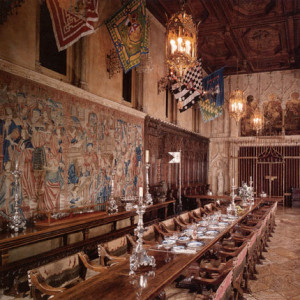
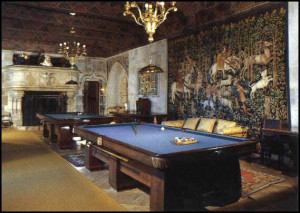
The Upstairs Suites Tour –
This tour is 45 minutes and takes visitors into the upper floors of Casa Grande to see rooms such as: W.R. Hearst’s private rooms and opulent guest rooms – the Doge’s Suite, the Library, the Gothic Suite as well as the exterior Gardens, Neptune Pool and lastly the Roman Pool. Be sure to look out the windows for amazing views of the beautiful gardens with the coastline and the Pacific Ocean seen in the distance.
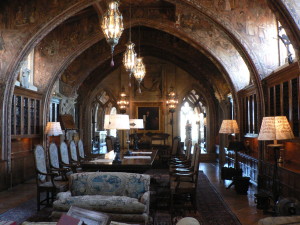
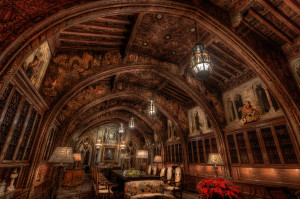
Cottages and Kitchen Tour –
This tour is 45 minutes and takes visitors into to two of the three guesthouses on the estate, also visited are the large Kitchen and the Wine Cellar in Casa Grande, the Gardens, the Neptune and the Roman Pool. While construction of the estate was ongoing for several years, Hearst and his family usually stayed in the Casa del Monte and the other cottage on the tour is the Casa del Mar.
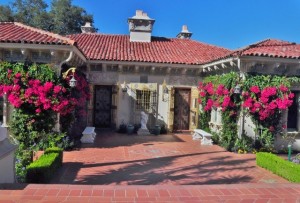
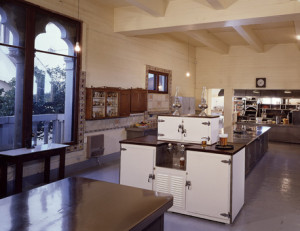
The Evening Tour –
This 1 hour and 40 minute tour is available every spring and fall during designated evenings. The Evening Tour allows visitors to see Hearst Castle as the sun is setting over the Pacific Ocean. The stage is set in the 1930s as if visitors are attending on of Hearst’s famous weekend parties for Hollywood and Political guests. Living History Docents dressed in period clothing roam about the estate as visitors tour Casa del Mar and the several rooms of Casa Grande, such as the Assembly Room, the Refectory, the Kitchen, the Library, the Gothic Suite, the Billiard Room, the Theater, the Gardens, the Neptune Pool and the Roman Pool.
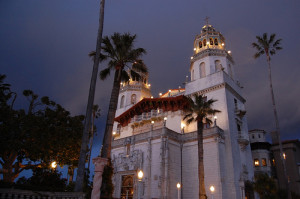

For more information about dates and times of the tours and additional details about visiting Hearst Castle, please see their website at www.hearstcastle.org
Interesting information about Hearst Castle
As I mentioned at the beginning of the post, when I first visited Hearst Castle during the 1960s I have a distinct memory of the zebras grazing on the hills surrounding the estate. It seems that Hearst had one of the world’s largest private zoos on the property. Below is information regarding that period of the history of Hearst Castle.
Animal Hill –
William Randolph Hearst owned a private zoo located on the property, this was not uncommon for wealthy men of the time who owned these private zoos with exotic animals to impress and entertain their guests who visited their large mansions in the countryside.
At the estate in San Simeon, Hearst kept some of his wild animals located in cages just north of the main buildings. Here in this area of the estate in cages of various sizes were several different species of animals, such as black bears, grizzly bears, lions, tigers, leopards, jaguars, cougars, chimpanzees, orangutans, monkeys, macaws, swans, storks and an elephant. The animals’ diet and exercise were carefully overseen by a veterinarian and staff.
Hearst also kept a small herd of 300 fallow deer which roamed the surrounding hills of Hearst Castle. Other exotic animals that grazed on the property were the American bison, Rocky Mountain elk, Alaskan big horned sheep, several different types of African and Asian antelope, camels, llamas, kangaroos, ostriches, emus, four giraffes that were kept in a small pen located near the road and of course those famous zebras.
In the late 1930s, as Hearst was experiencing financial difficulty he halted the construction on the estate and in the process of cutting expenses over the next several years he decided to sell or donate many of his exotic animals to public zoos. Two years after Hearst death, most of the animals were gone. By the time that the State received Hearst Castle from the estate, the only animals that remained were elk, goats, sheep, deer and zebra. Today, only a few of those animals survived but a herd of zebra is all that remain.

Like this:
Like Loading...
